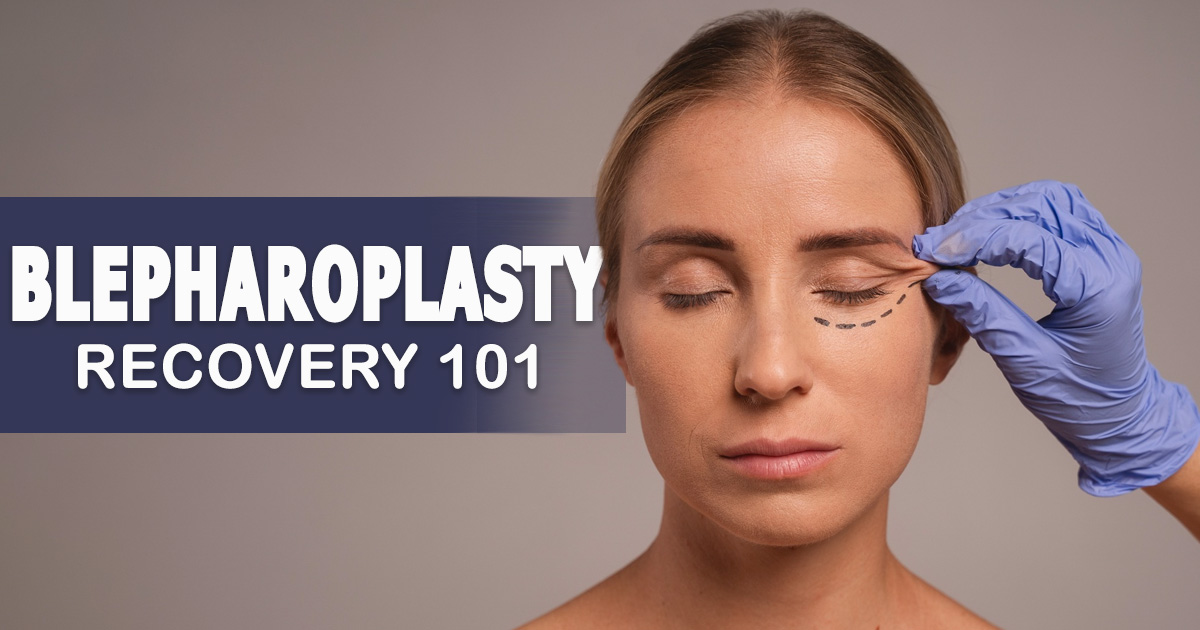Blepharoplasty Recovery 101: What to Expect Every Step of the Way

Blepharoplasty, or eyelid surgery, is a go-to procedure for anyone looking to fix droopy lids or under-eye puffiness. It’s a simple way to refresh your eyes and even improve your vision if sagging skin is getting in the way. According to the American Society of Plastic Surgeons, there are 120,747 blepharoplasty procedures performed in the U.S. in 2023, putting it in the top 5 most common cosmetic surgeries out there.
If you’re considering getting it done, you probably have a lot of questions. And one of the biggest ones is usually this: How long does it take to recover?
The truth is, recovery looks a little different for everyone. Factors like age, overall health, and how well you follow care instructions all play a role. To help clear things up, here’s a breakdown of the typical recovery timeline, what you can expect at each stage, and a few tips to make the process smoother.
Recovery Timeline for Eyelid Surgery
Recovering from blepharoplasty isn’t as scary as it might sound. The process unfolds in stages, so here’s what usually happens week by week:
Days 1 to 3
Right after surgery, your eyelids will probably feel a little swollen and tender. Bruising is almost a given, and your eyes might be watery or slightly blurry. Don’t panic; this is all very normal! Swelling usually hits its peak around day 3, so if things look worse before they get better, that’s expected too.
The good news? Most people find the pain pretty minimal. You can handle it with over-the-counter meds like Tylenol (skip aspirin or ibuprofen since they can increase bruising). Use a cold compress on your eyes for 20 minutes at a time to bring the puffiness down. And yes, it’s totally okay if you spend these first few days bingeing your favorite shows while resting with your head elevated.
Days 4 to 7
By the end of the first week, you’ll start seeing noticeable improvements. Swelling will go down, bruises will begin fading, and the tender feeling in your eyes will ease up. You might still have some colorful bruising (think purples or yellows), but this phase is when most people feel well enough to start doing light activities again.
If you had stitches, your surgeon will likely remove them around this time. And while you might feel physically fine, it’s best to take it easy for a little longer. Avoid working out or doing heavy lifting since that can slow down your recovery.
Weeks 2 to 3
The changes in weeks 2 and 3 are probably what you’re really looking forward to. Swelling and bruising should be mostly gone, and you’ll start seeing your results take shape. Your eyes will look more open and awake, but your eyelids might still feel slightly stiff or tight as they heal. This is normal and will settle with time.
If you’re itching to get back to your routine, you’re in luck! Many people head back to work by the start of week two. You can even use makeup to cover up any lingering discoloration (just check with your surgeon first). Light exercise is usually fine here too, but maybe hold off on the high-intensity workouts until week four.
One Month and Beyond
By week four, you’ll be looking and feeling more like yourself—but with brighter, refreshed eyes! At this point, most people are fully back to their daily lives, which includes exercising and enjoying outdoor activities. Just make sure to protect your eyes from the sun by wearing sunglasses, especially while your skin is still healing.
While you’ll be mostly recovered on the outside, keep in mind that internal healing continues for several months. Scars will keep fading and softening, and you’ll likely notice small improvements over time. Many patients say they notice their final results around the six-month to one-year mark.
How Long Until You Look “Normal”?
Most people feel okay going out in public about 10 to 14 days after surgery. By then, the worst of the swelling and bruising is behind you. If you’re still worried about any discoloration, a little makeup or sunglasses can work wonders. That said, it’s important to be patient. Healing takes time, and those “perfect” results you’re waiting for might not fully show up until a few months down the line.
Tips to Speed Up the Healing Process
Want to recover as quickly and smoothly as possible? Here are some easy tips to help:
- Follow your surgeon’s directions like they’re the golden rule. They know exactly how to guide you through recovery.
- Skip intense activities like heavy lifting or running until you’ve been cleared to exercise again.
- Use cool compresses during the first few days to reduce swelling and make you more comfortable.
- Protect your sensitive skin by wearing sunscreen and sunglasses outdoors.
- Don’t rush makeup or contacts and wait until your surgeon gives you the green light before applying anything near your eyes.
- Eating and hydrating well with foods rich in vitamins can work wonders for healing.
Bright Eyes, No Worries
If you’re worried about blepharoplasty being intimidating, don’t be! It’s actually a straightforward and safe procedure in the hands of a skilled, board-certified surgeon. While it’s natural to feel a little nervous about any surgery, knowing what to expect and planning for recovery can make a world of difference.
The most important thing to remember is to give yourself enough time to heal. Your body needs that time to adjust, so hold off on any strenuous activities or heavy lifting until you’re fully cleared by your doctor. Trust the process, be patient, and follow your surgeon’s advice closely. Before you know it, you’ll be enjoying the refreshed, confident look you’ve been waiting for. If blepharoplasty has been on your mind, it might just be the perfect way to brighten both your eyes and your perspective!
